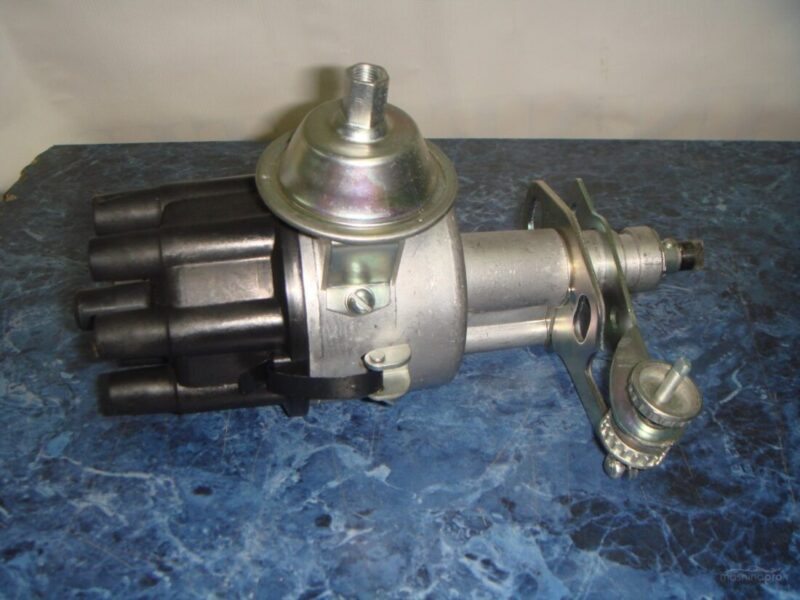
Trambler: device, malfunction, check
Content
There are different elements in the ignition system of a car, on the serviceability of which the timely supply of a spark in a particular cylinder depends. In a modern car, this process is electronically controlled in accordance with the software installed in the control unit.
Old cars (not only domestic classics, but also foreign models) were equipped with many mechanical devices that distributed signals to different nodes of the system. Among such mechanisms is a distributor.
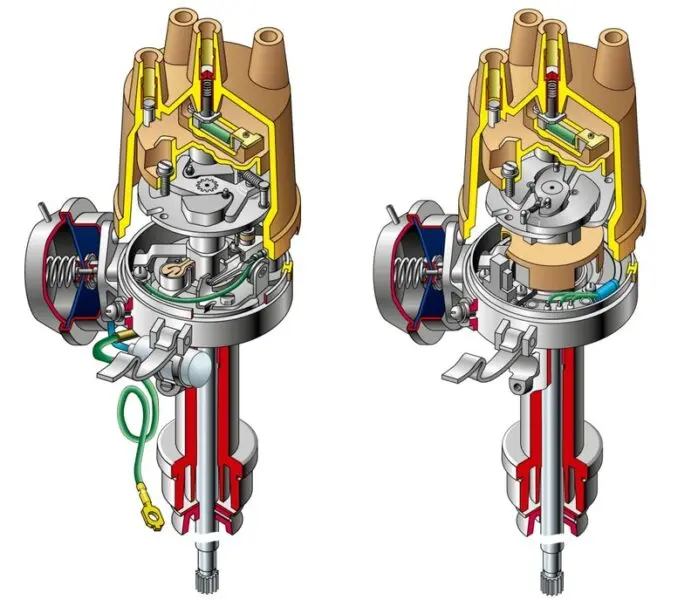
What is a distributor?
This part is also called the distributor breaker in the ignition system. As the name suggests, this mechanism is involved in closing / opening the circuit of one of the vehicle's electrical circuits.
The part can be found with the naked eye by lifting the hood. The distributor will be located in the area of the cylinder head cover. It cannot be confused with anything, since high-voltage wires are connected to its cover.
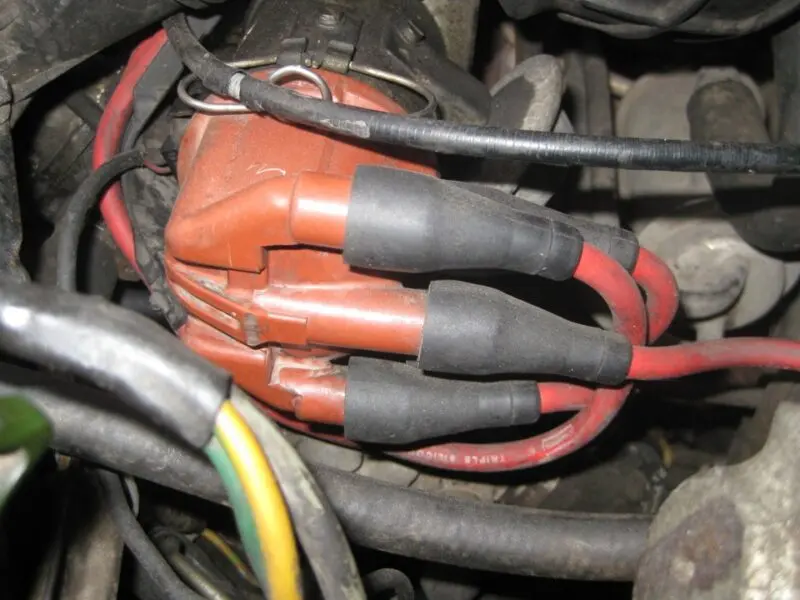
What is it for a distributor?
The distributor ensures the timely supply of an impulse coming from the head unit (ignition coil). In each cylinder of a four-stroke engine, four different processes take place, which are repeated in a cyclical sequence.
In a certain sequence in the cylinders (not all engines have the same stroke order), the air-fuel mixture is compressed. When this parameter reaches its maximum value (engine compression), the spark plug should create a discharge in the combustion chamber.
To ensure smooth rotation of the crankshaft, the strokes do not take place in turn, but depending on the position of the cranks. For example, in some 6-cylinder engines, the spark plug firing order is as follows. First, a spark is formed in the first cylinder, then in the third, then in the fourth, and the cycle ends with the second.
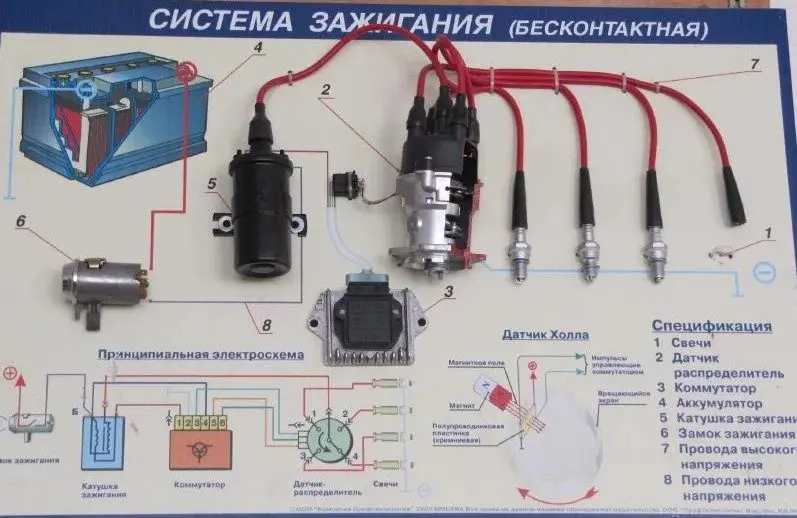
In order for the spark to be formed stably in accordance with the order of the clock cycles, a distributor is required. It interrupts the electrical circuit in some circuits, but supplies current to a specific one.
Ignition of the fuel mixture without a distributor in the contact system is impossible, since it distributes the order of activation of the cylinders. In order for the voltage to arrive at a strictly defined moment, the module is synchronized with the operation of the gas distribution mechanism.
Where is the distributor located?
Basically, the ignition distributor, regardless of its model, is located on the cylinder head cover. The reason is that the distributor shaft is set in rotation due to the rotation of the camshaft of the gas distribution mechanism.
So that the electrical line from the distributor to the ignition coil and the battery is not too long, the distributor-breaker is installed on the side of the cylinder head cover with which the battery is located.
The distributor device and how it works
Depending on the car model, this mechanism may have its own structure, but the key elements have a similar shape. Trambler consists of the following key components:
- Shaft with gear, which meshes with the timing drive;
- Contacts that break the electrical circuit (the entire element is called a breaker);
- The cover in which the contact holes are made (BB wires are connected to them). Inside this part, contacts are brought out for each wire, as well as a central cable coming from the ignition coil;
- Under the cover there is a slider mounted on the shaft. It alternately connects the contacts of the candle and center wires;
- Vacuum ignition timing controller.
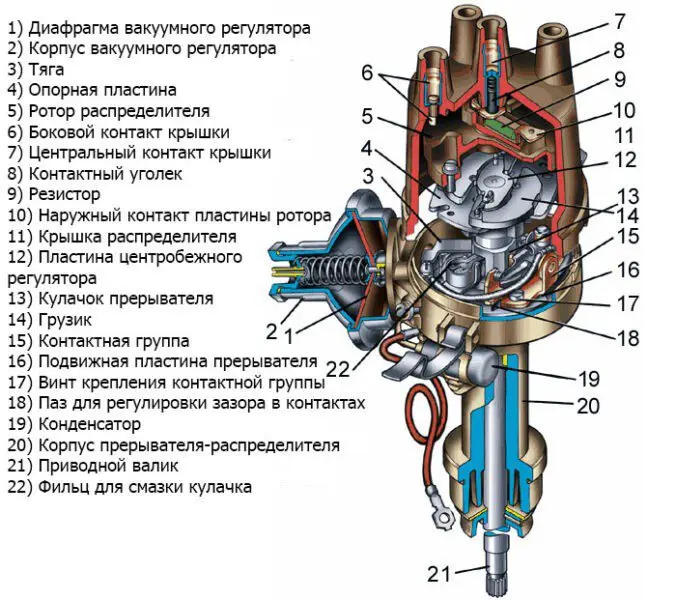
This is a common scheme for the contact modification of the distributor. There is also a non-contact type, which has a similar structure, only a Hall-principle sensor is used as a breaker. It is installed instead of the breaker module.
The advantage of the non-contact modification is that it is capable of passing a higher voltage (more than twice).
The principle of operation of the distributor is as follows. The crankshaft sensor sends a pulse to the coil. In it, at this stage, the primary winding is active. As soon as a signal reaches the device, the secondary winding is activated, in which a high voltage is generated due to electromagnetic induction. The current through the central cable goes to the distributor.
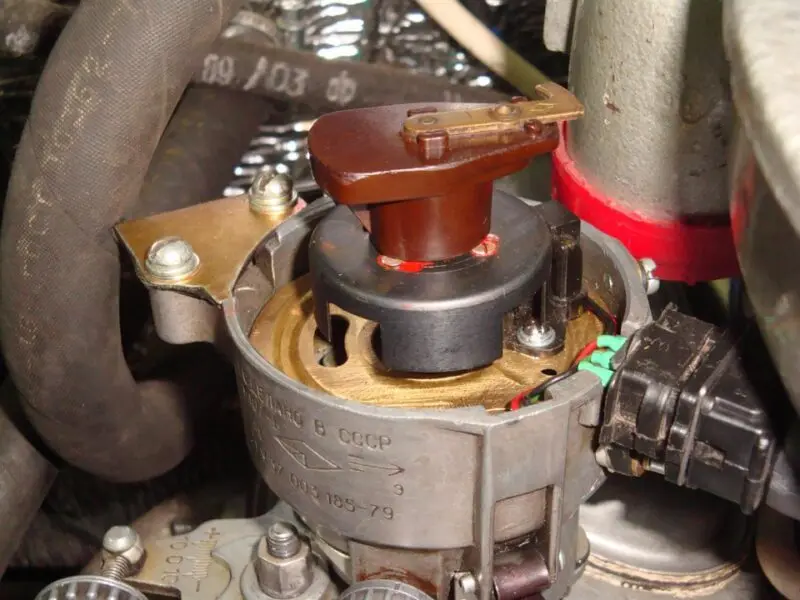
The rotating slider closes the main wire with the corresponding spark plug cable. An already high voltage pulse is supplied to the corresponding electrical unit of a particular cylinder.
Details about the most important elements of the distributor device
Different elements of the distributor provide a timely interruption of the supply of electricity to the primary winding of the coil and the correct distribution of the high-voltage pulse. They also allow you to adjust the moment of spark formation depending on the mode of operation of the engine (changing the ignition timing) and perform other functions. let's consider them in more detail.
Vacuum regulator
This element is responsible for changing the ignition timing (UOZ), if necessary for the most efficient operation of the motor. The adjustment is made at the moment when the engine is subjected to increased load.
This regulator is represented by a closed cavity, which is connected by a flexible hose to the carburetor. The regulator has a diaphragm. The vacuum in the carburetor drives the diaphragm of the vacuum regulator.
Due to this, a vacuum is also formed in the second chamber of the device, which slightly shifts the interrupter cam through the movable disk. Changing the position of the diaphragm leads to early or late ignition.
Octane corrector
In addition to the vacuum regulator, the design of the distributor allows you to adjust the ignition timing. The octane corrector is a special scale on which the correct position of the distributor housing relative to the camshaft is set (it rotates in the direction of increasing or decreasing the UOZ).

If the car is refueled with different grades of gasoline, it is necessary to independently set the octane corrector for the timely ignition of the air-fuel mixture. The adjustment is carried out at idle and with the correct idle speed and mixture composition (special screws in the carburetor body).
Contactless systems
This type of ignition system is analogous to a contact system. Its difference is that in this case a non-contact breaker is used (a Hall sensor installed in the distributor instead of a cam breaker). Also, a switch is now used to operate the system. The non-contact ignition system does not suffer from contact burning, which the cam interrupter suffers from.
Types of distributors
The type of ignition system depends on the type of distributor. There are three of these varieties:
- Contact;
- Contactless;
- Electronic.
Contact distributors are the oldest technology. They use a mechanical breaker. Read more about the contact ignition system separately.
Non-contact tramblers do not use a mechanical runner-breaker. Instead, there is a Hall sensor that sends pulses to a transistor-type switch. Read more about this sensor. here... Thanks to the contactless distributor, it is possible to increase the ignition voltage, and the contacts will not burn.
Also, due to the higher ignition voltage, the air-fuel mixture ignites in a timely manner (if the UOZ is correctly set), which has a positive effect on the dynamics of the car and its gluttony.
Electronic ignition systems lack a distributor as such, because no mechanisms are required to create and distribute the ignition pulse. Everything happens thanks to electronic impulses that are sent by the electronic control unit. Electronic systems also belong to the category of contactless ignition.
In machines equipped with a distributor, this breaker-distributor is different. Some have a long shaft, others have a short one, so even with an identical type of ignition system, you need to select a distributor for a specific car model.
Important characteristics of the distributor
Each individual engine has its own operating characteristics, and therefore the distributor must be adjusted to these features. There are two parameters that affect the stability of the internal combustion engine:
- The angle of the closed state of the contacts. This parameter affects the speed of closing the distributor electrical circuit. It affects how strongly the coil winding is charged after discharge. The quality of the spark itself depends on the strength of the current;
- Ignition timing. The plug in the cylinder should not fire at the moment when the piston compresses the BTC and takes the top dead center, but a little earlier, so that when it rises completely, the fuel combustion process is already initiated and there is no delay. Otherwise, the efficiency of the motor may be lost, for example, when changing the driving style. When the driver abruptly switches to sporty driving, the ignition should be triggered a little earlier, so that the ignition process is not delayed due to the inertia of the crankshaft. As soon as the motorist switches to a measured style, the UOZ changes.
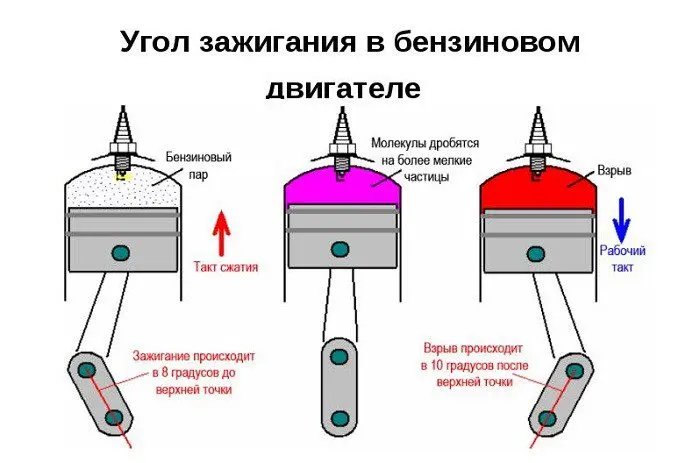
Both parameters are regulated in the distributor. In the first case, this is done manually. In the second case, the distributor-breaker independently adjusts to the operating mode of the motor. To do this, the device has a special centrifugal regulator, which changes the spark supply time so that it ignites the mixture at the moment when the piston just reaches TDC.
Trambler malfunctions
Since the distributor consists of many small parts on which a strong electrical load is placed, various malfunctions can occur in it. The most common are the following:
- When the engine stalls not due to turning off the ignition, but due to unfavorable factors (heavy fog, during which a breakdown of the explosive wires can be observed), the distributor cover may be damaged. There are frequent cases when cracks are formed in it, but more often the contacts burn or oxidize. Such damage may be due to unstable motor operation;
- The slider fuse has blown. In this case, its replacement is required, since the pulse will not go to the short circuit;
- The capacitor has struck. This problem is often accompanied by an increase in the voltage supplied to the candles;
- Deformation of the shaft or formation of damage to the housing of the device. In this case, you also need to replace the broken part;
- Breakage of vacuum. The main malfunction is diaphragm wear or it is dirty.
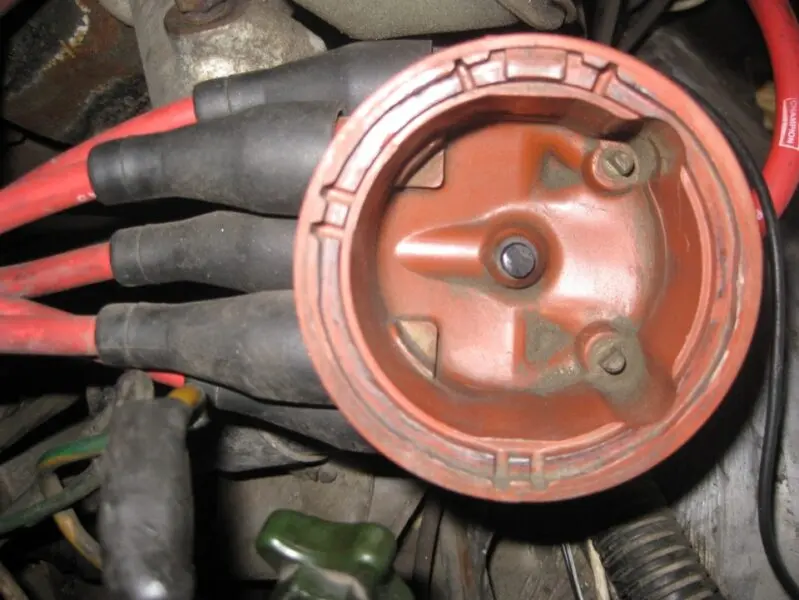
In addition to those listed, abnormal breakdowns may occur in the distributor. If there are any malfunctions in the spark supply, the machine must be shown to a specialist.
How to check if it works?
To make sure that the unstable operation of the motor is really associated with a breakdown in the distributor, you need to take several steps:
- We remove the cover and inspect it for the formation of oxidation, carbon deposits or mechanical damage. Better to do it in a good light. The inside should be free of moisture and graphite dust. There should be no damage on the slider button, and the contacts should be clean;
- The vacuum is checked by parsing it. The diaphragm is inspected for tears, elasticity, or contamination. The elasticity of the element is also checked through the hose of the device. To do this, the car owner draws in air from the hose a little and closes the hole with his tongue. If the vacuum does not disappear, then the diaphragm is working properly;
- Checking the capacitor malfunction is detected using a multimeter (setting no more than 20 μF). There should be no deviations on the device screen;
- If the rotor breaks through, then this malfunction can be detected by removing the cover and connecting the contact of the center wire with the slider. With a working rotor, a spark should not appear.
These are the simplest diagnostic procedures that a car owner can independently perform. For a more accurate and in-depth diagnosis, you should take the car to a car mechanic dealing with ignition systems.
Here is a short video about checking for breakdowns of the SZ distributor-breaker:
How to repair a distributor
Features of the repair of the distributor depend on its design. Consider how to repair the distributor, which is used on domestic classics. Since this mechanism uses parts that are subject to natural wear and tear, often the repair of the distributor comes down to replacing them.
The order of work is as follows:
- Two screws are unscrewed, with which the chopper rotor is attached to the base plate. The rotor is removed. In order to avoid mistakes when assembling the mechanism, it is necessary to put markings on the springs and weights. The spring is removed from the centrifugal regulator.
- The nut is unscrewed, with which the contact of the capacitor is fixed. Dismantle the condenser. Remove the insulating spacer and washer.
- The screws are unscrewed from the contact group, after which it is removed, and also remove the washers from it.
- A movable contact is removed from the axis of the contact group. The lock washer is dismantled, with which the vacuum regulator rod is attached, and the rod itself (it is located on the axis of the movable plate).
- The vacuum regulator is dismantled. The pin fixing the clutch is pressed out, so that the clutch itself can be removed. The puck is removed from it.
- The distributor shaft is removed, the bolts securing the bearing plates are unscrewed. The movable plate is removed together with the bearing.
After the distributor has been disassembled, it is necessary to check the condition of all moving elements (shaft, cams, plates, bearing). There must be no wear on either the shaft or the cams.
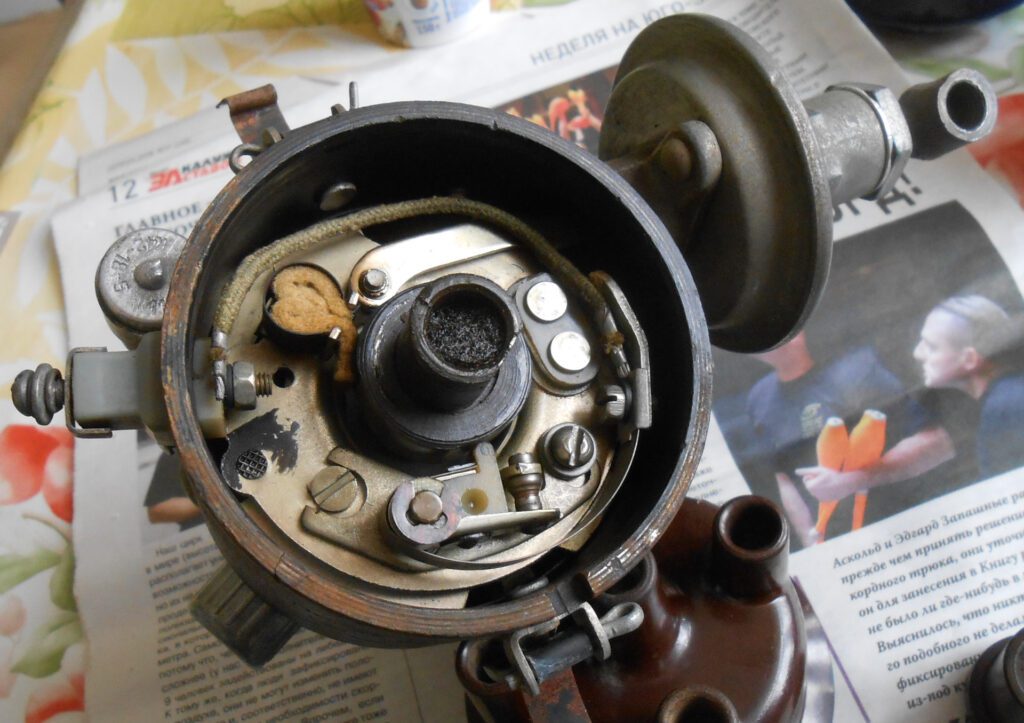

Check the performance of the capacitor. Its capacitance should be between 20 and 25 microfarads. Next, the performance of the vacuum regulator is checked. To do this, press the rod and close the fitting with your finger. The working diaphragm will hold the rod in this position.
It is necessary to clean the breaker contacts, change the bearing in the distributor housing (hull sleeve), adjust the breaker contact gap (it should be about 0.35-0.38 mm.) After the work has been done, the mechanism is assembled in the reverse order and in accordance with the previously set marks.
Replacement
If a complete replacement of the distributor is required, then this work is carried out in the following sequence:
- The battery is disconnected;
- High-voltage wires are removed from the cover of the distributor (although they have different lengths, they can additionally be numbered in accordance with the position on the cover);
- The hose of the vacuum regulator is removed;
- The old distributor is dismantled, and a new mechanism is installed in its place.
The assembly of the ignition system is carried out in the reverse order. If, after replacing the distributor, the engine began to work incorrectly (for example, when the gas pedal is pressed sharply, the speed does not increase, and the internal combustion engine seems to “choke”), you need to slightly change the position of the distributor by turning it slightly in place to another mark.
Related videos
Here is a short video on how to solve the problem with early ignition in a carburetor engine yourself:


Watch this video on YouTube
Questions and answers:
What is the distributor responsible for? The distributor is a key element of the ignition system of many later generations of cars. It can be equipped with a contact or non-contact (Hall sensor) breaker. This device serves to generate a pulse that interrupts the charging of the winding of the ignition coil, as a result of which a high voltage current is generated in it. Electricity from the ignition coil goes to the central high-voltage wire of the distributor and through the rotating slider is transmitted through the BB wires to the corresponding spark plug. Based on this function, this device is called an ignition distributor.
Signs of a malfunction of the distributor. Since the distributor is responsible for distributing and supplying a high-voltage pulse to ignite the air-fuel mixture, all its malfunctions affect the behavior of the motor. Depending on the nature of the breakdown, the following symptoms may indicate a faulty distributor: the car jerks during acceleration; unstable idle speed; the power unit does not start; the car has lost momentum; the knock of piston fingers is heard during acceleration; increased gluttony of the car.